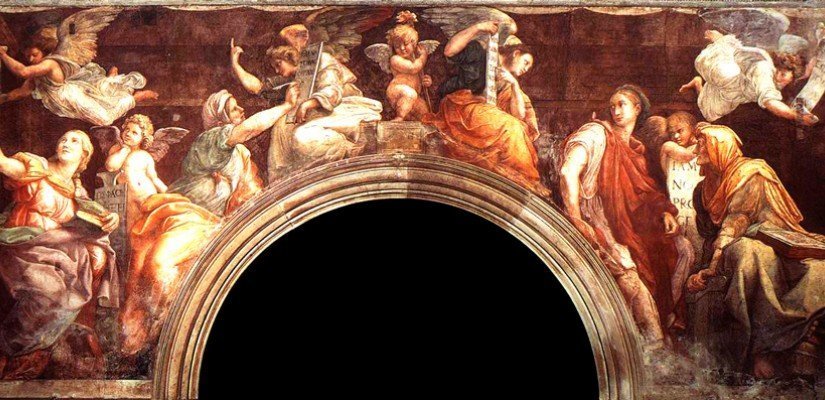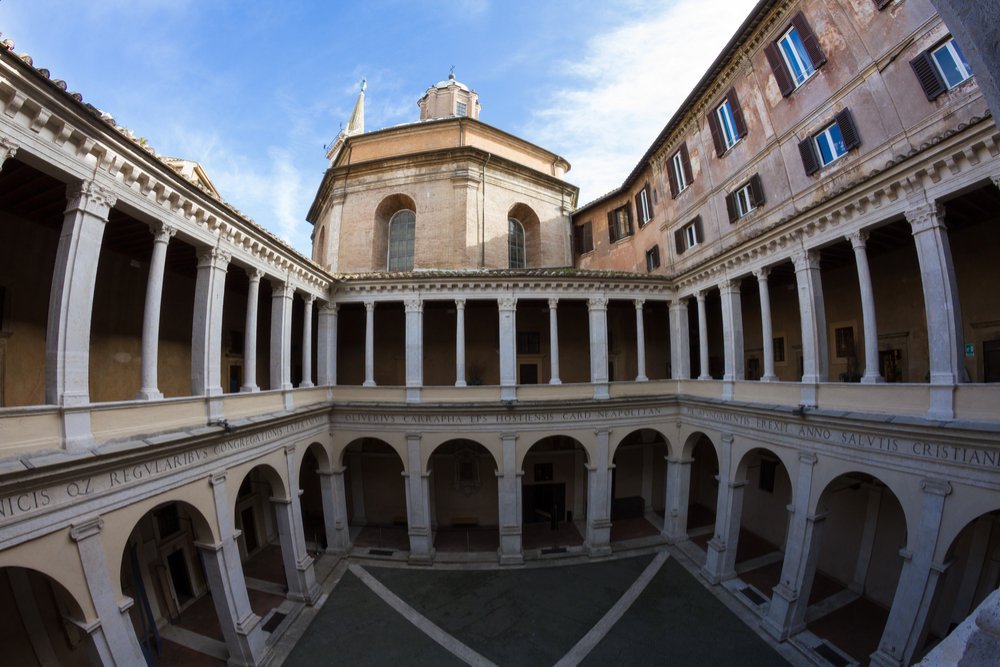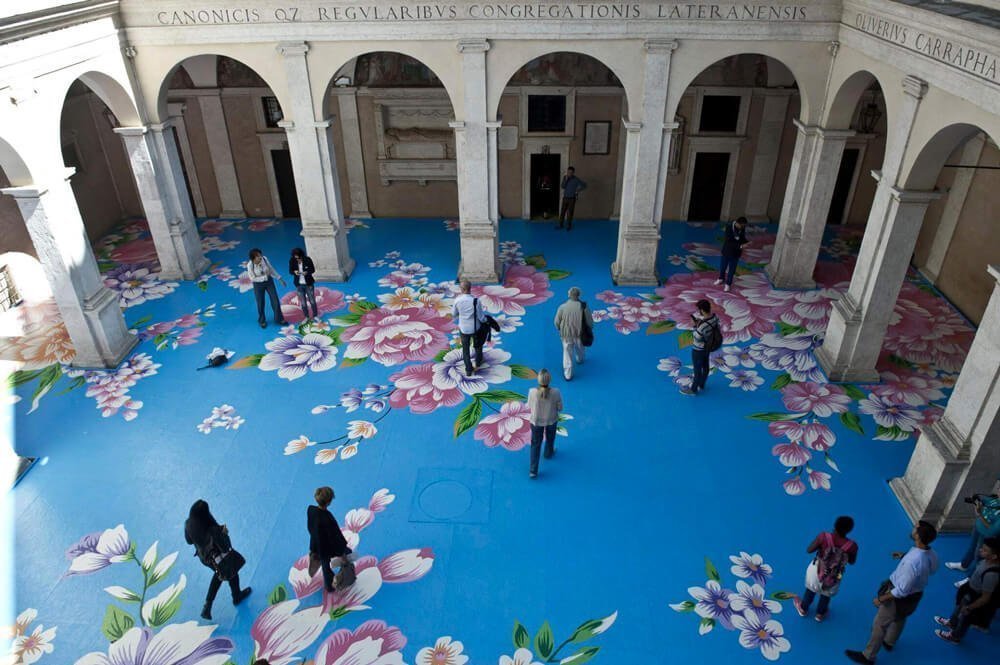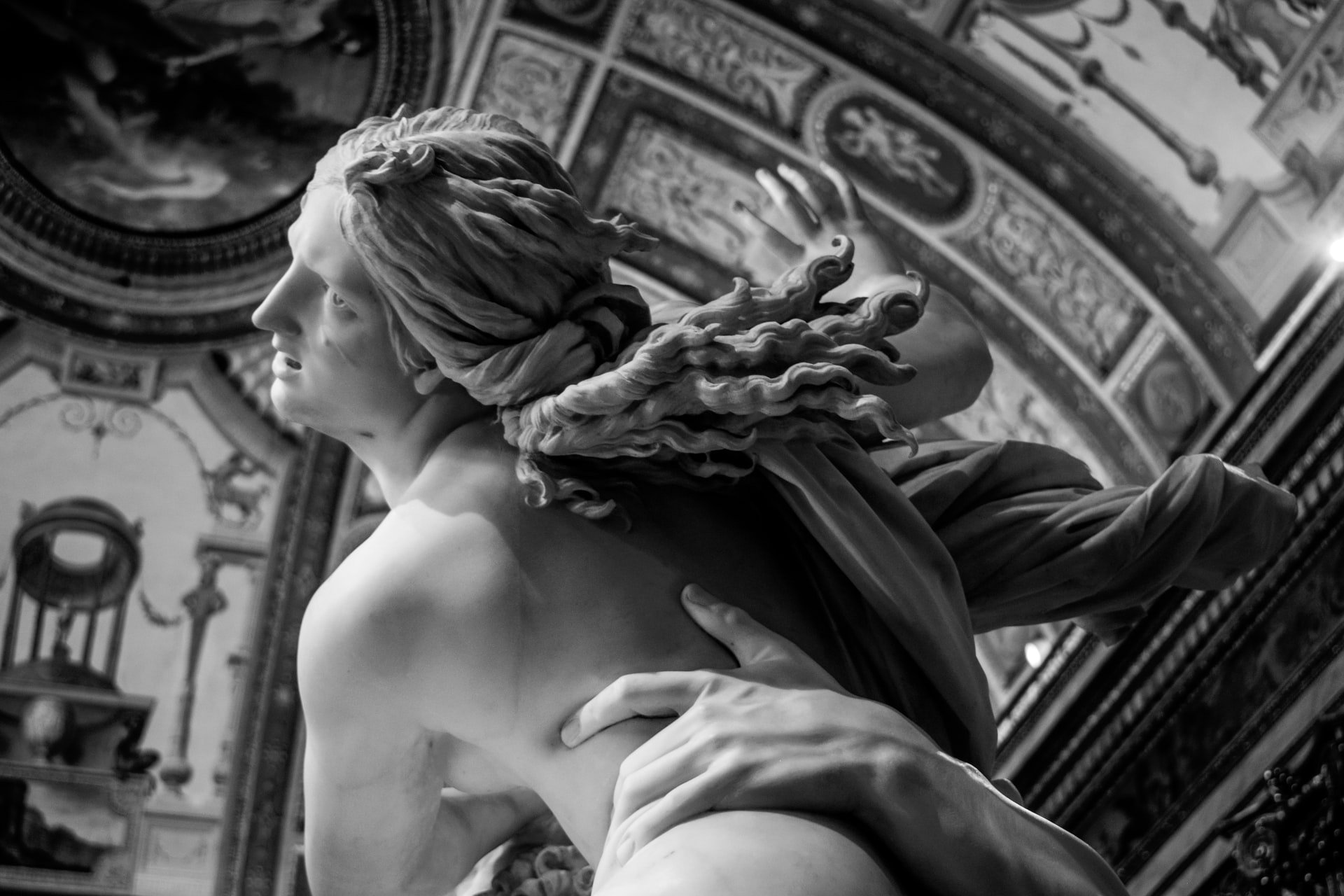History of the Venue
Completed in 1504 on a commission by Cardinal Oliviero Carafa, the Chiostro del Bramante (Cloister of Bramante) is an historic building, part of the monumental complex of Santa Maria Della Pace built at the end of the 15th century by Pope Sixtus IV (the facade was designed by Pietro da Cortona in the mid-17th century). The cloister, near Piazza Navona, was the first building completed by the great Renaissance architect Donato Bramante (1444 – 1514) in the city of Rome.
The Cloister of Bramante, widely considered to be one of the Italian Renaissance’s architectural masterpieces, today serves as an internationally known contemporary art gallery. What makes it doubly unique is that it leverages this masterpiece’s beautiful space with many of the artworks designed specifically for this venue. After the very successful LOVE exhibition, Il Chiostro del Bramante tries to show the versatile nature of the space and pursue a new and adventures path.
Danilo Eccher, the exhibition’s curator, says “Sometimes breaking the rules doesn’t necessarily mean misbehaving, but expanding rules boundaries. A rule that the Chiostro del Bramante follows in its schedules is proposing exhibitions that are “thinking outside the box” exhibitions, in which originality is always the base idea of the project.”
Indeed, the current exhibition, Enjoy, not only aims to create space for the artwork, but to create a different way of experiencing art altogether as they lead their audience through an invisible path in which one will be able to see the artwork from different perspectives and, therefore, sense different perceptions.
With the desire of getting lost in art…and with the desire to pursue a new, adventurous path…the exhibit, guided by the poetical voice of some of the most important & provocative contemporary artists, stimulates all senses, asks visitors to participate, and to interact with the artworks.
When visiting Enjoy, start from Alexander Calder’s sculptures, then lose yourself in Leandro Erlich’s mirror maze and then dive into Martin Creed’s art installations or even in TeamLab’s illusory light-games in which the audience becomes unavoidably part of the artwork.
At last, let Tony Oursler’s creepy and indiscreet eyes chase you, and then meet Erwin Wurm’s deformed bodies. From one artist to another, from one hall to the other, the Chiostro del Bramante is going to become the place where you discover a whole new reality, that exists in every artwork. But then again…this reality might not even really exist.
As Sela Akin on Romeing.it wrote about the exhibition:
This exhibition welcomes its visitors with a lovely sculpture by Alexander Calder: you find yourself in a completely empty room faced with a kinetic sculpture that politely demands your attention as it hovers over you. The importance of this piece is embedded in its characteristic emblem, at the start of contemporary art in the 1960’s. Following Calder, Mat Collishaw’s Centrifugal Soul welcomes you into a dark room where you’re faced with his amazing zoetrope. While creating this work, Collishaw used the theory of evolutionary psychologist Geoffrey Miller, who believes that ‘the origins of art stem from natural instincts of courtship and reproduction’. The piece is in the form of a zoetrope, a device that was used to make animation before film. With its fast rotation and lighting, the device creates an illusion of movement. Collishaw’s zoetrope is characterized by bowerbirds and birds of paradise performing their mating calls. Overall, the work connects our natural desires with art through enjoyment.
Above:
…a very fun and interactive work by Leandro Erlich. His installation piece plays with our visual sense to an extreme. With a set of changing rooms all connected to one another – either with mirrors or with just empty frames – you are led through Erlich’s maze created to pursue the idea of how much we trust our vision and what we expect from it.
After this maze, Tony Oursler, Ernesto Neto, Piero Fogliati, Michael Lin, Gino De Dominicis welcome you to a sensory overload. With audio recordings, color palettes and close-up views of eyeballs, the visitors are invited to question how we enjoy things and what we use to do this. The second floor of the museum focuses on works related to size and scale.
Danilo Eccher says that “pleasure, game, fun, excess dimensions,” … “have always been fundamental elements in art.”
“Art drowns in sorrow but feeds on pleasures. Illusion is a transparency that misshapes reality, it’s a semblance in which everything is possible, suggesting either the doubt of a riddle or the smile of a surprise.”
And as Paul Klee said: “Art does not reproduce the visible; rather, it makes visible what not always is”.




